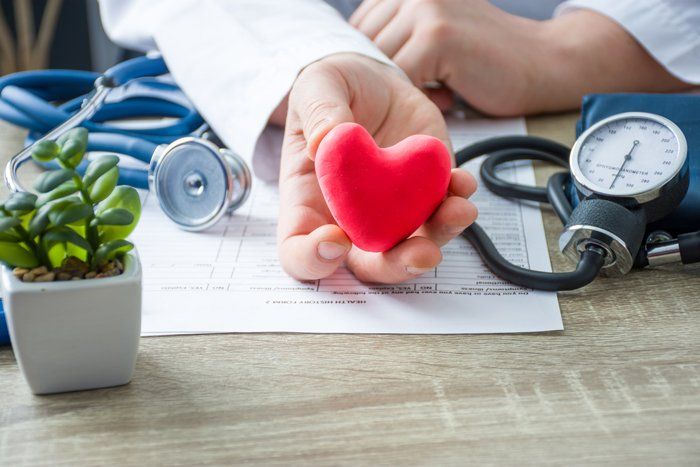Arrhythmia Monitoring Services
-
City skyline
Photo By: John DoeButton
An arrhythmia is a change in the heart’s rhythm that causes the heart to beat too fast, too slow, or irregularly. A heartbeat that is too fast is called tachycardia. A heartbeat that is too slow is called bradycardia.
Arrhythmias have many causes. They are not always caused by heart disease. Sometimes heart rhythm disturbances can be dangerous. Stress, smoking, heavy alcohol, drugs such as cocaine or amphetamines, and some medicines can lead to arrhythmias in some people.
Signs and symptoms of an arrhythmia include:
- Palpitations (an unpleasant feeling that your heart is skipping beats or beating too hard)
- A rapid heartbeat, a slow heartbeat, or an irregular heartbeat
- Weakness, dizziness, light-headedness, and fainting
- Shortness of breath
- Chest pain
- Anxiety
HOLTER MONITORING
This device records the heart’s electrical activity continuously over a 24-hour period. There is no special preparation for this painless test. Wires from a small, portable monitor are taped to the patient’s skin, and he or she is asked to go about usual daily activities. The patient keeps a diary so the physician can correlate the monitor’s results with the patient’s reported symptoms.
EVENT MONITORING
Event monitors are useful to diagnose arrhythmias that only occur once in a while. The device is worn continuously, but only records the heart’s electrical activity when you push a button on the device. You push the button on the device when you feel symptoms. Event monitors are typically worn for one month, or as long as it takes to get a recording of the heart rhythm during symptoms.
FAQ
- Q: WHAT IS ATRIAL FIBRILLATION?
A: Atrial fibrillation (A fib) is one of the most common heart rhythm disorders, affecting more than two million people in the United States. In A fib, the heart beats rapidly and irregularly. Although not directly life threatening, A fib can cause palpitations, other rhythm problems, chronic fatigue, shortness of breath, chest pain, dizziness and stroke. The chance of a stroke is increased five-fold in patients with A fib.
The likelihood of developing A fib increases with age but can occur in young patients as well. Treatment of A fib includes medications to establish normal rhythm, medications to slow the heart rate during A fib, and medications that reduce the chance of a blood clot forming which can lead to stroke. Often A fib can be difficult to control. New procedures are now available which can cure A fib in selected patients.
- Q: I OFTEN FEEL LIKE MY HEART SKIPS A BEAT. IS THIS NORMAL?
A: One of the most common presenting complaints to a cardiologist is the complaint of a “skipped heartbeat.” Normal heart rhythm is dictated by the sinus node, the pacemaker of the heart, which resides in the top right cardiac chamber. The sinus node sends electrical impulses to the bottom chambers of the heart, the ventricles, through specialized conduction tissue. The resulting rhythm is regular – the top chambers, the atria, beat first followed by beating in the ventricles. The sensation of skipped beats usually comes from extra electrical beats originating in the atria or ventricles. These extra beats are very common and can increase with stress or increased caffeine intake. As we get older, the frequency of these extra beats tends to increase. Generally, these extra beats do not represent a serious problem, but if they persist consultation with a physician is recommended.
- Q: WHAT DOES A HOLTER MONITOR TELL ME ABOUT MY HEART?
A: A Holter monitor is a portable electrocardiogram (EKG) that monitors the electrical activity of an ambulatory patient’s heart for a 24-hour period. It is most often used when your physician suspects an abnormal heart rhythm, often based on complaints of a sensation of a beating heart, a fast heartbeat, or palpitations.
LOCATIONS TO SERVE YOU
- Mon - Fri
- -
- Sat - Sun
- Closed
TROY
WE MOVED to our new Rochester Hills location: 2061 West Auburn Road
Rochester Hills, MI 48309
P. 248-923-2002
F. 248-759-4892
- Mon - Fri
- -
- Sat - Sun
- Closed
- Mon - Fri
- -
- Sat - Sun
- Closed
GROSSE POINTE
16815 East Jefferson Ave – Suite 110
Grosse Pointe, MI 48230
P. 313-509-2212
F. 313-509-2202
Hours:
- Mon - Fri
- -
- Sat - Sun
- Closed
- Mon - Fri
- -
- Sat - Sun
- Closed

